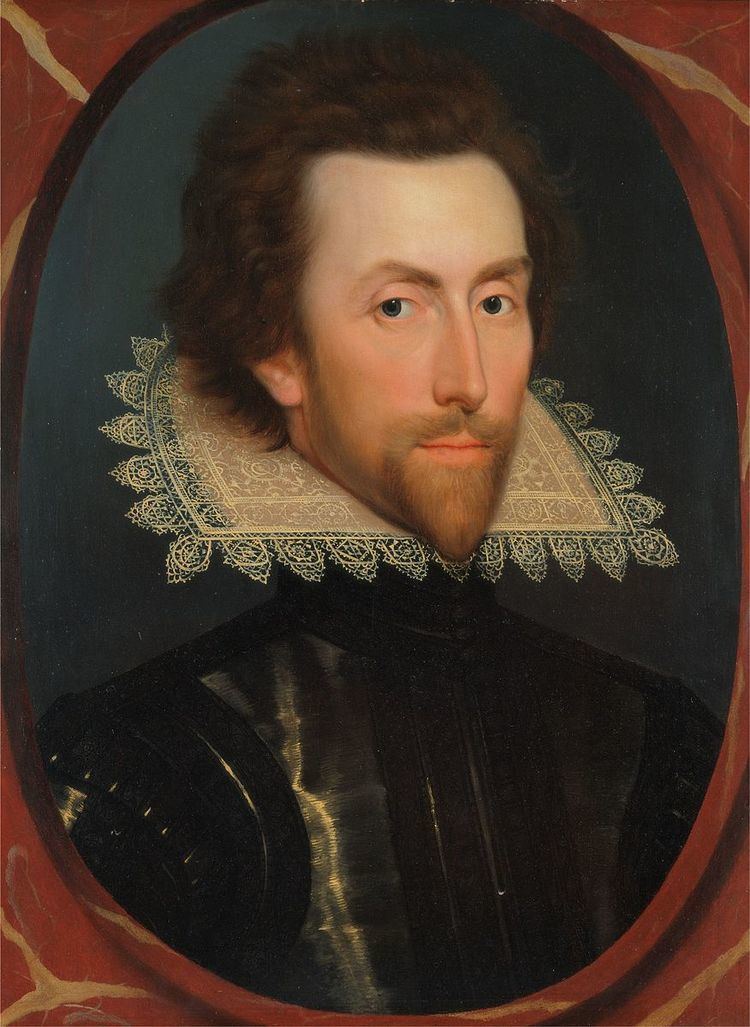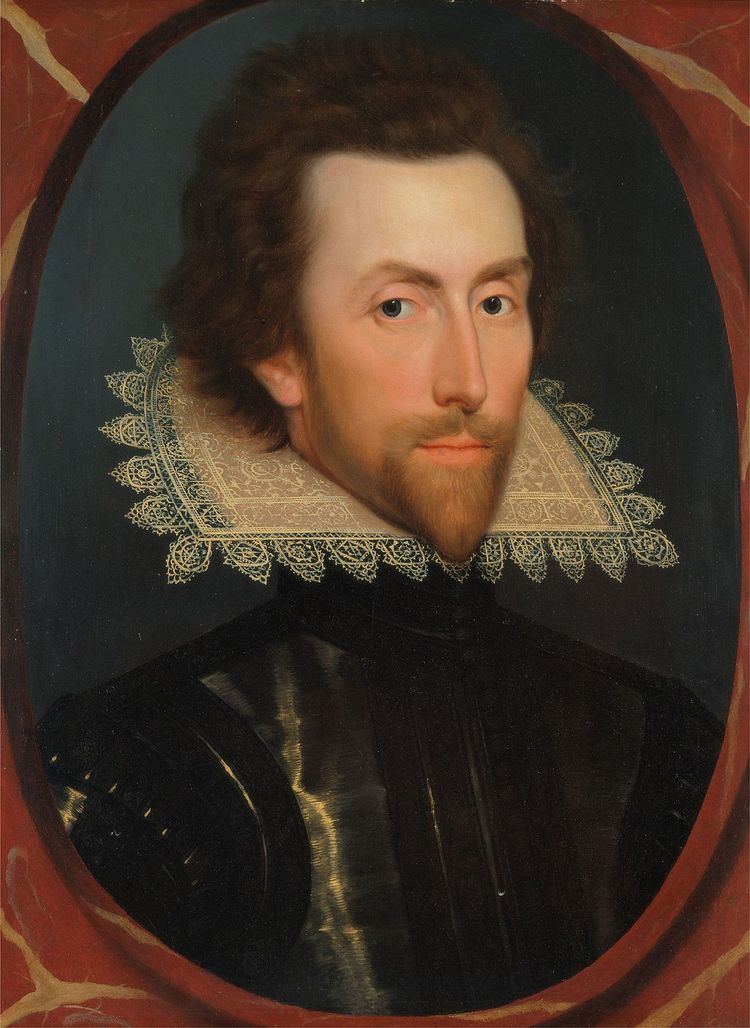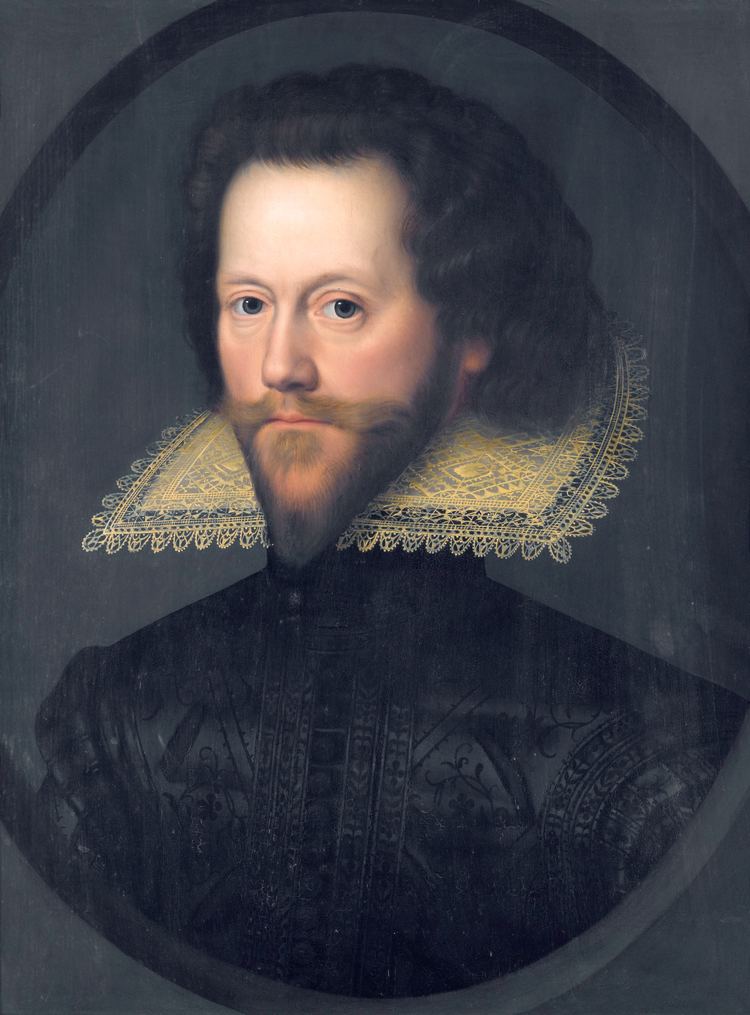Name Grey 5th | Died August 10, 1621 | |
 | ||
Books Observations and Discourses | ||
Grey Brydges, 5th Baron Chandos (c. 1580 – 10 August 1621) was an English nobleman and courtier.
Contents

Early life

He was the only son of William Brydges, 4th Baron Chandos, who died on 18 November 1602, and Mary Hopton, who was daughter of Sir Owen Hopton. He was M.P. for Cricklade, in 1597.
Brydges and his family were friendly with Robert Devereux, 2nd Earl of Essex. His father visited Essex at Essex House on the Sunday morning (8 February 1601) of Essex's insurrection, but he was not deemed by the government to be implicated in the conspiracy. The son, Grey Brydges, was, however, suspected of immediate complicity, and was sent to the Fleet Prison with Henry Cuffe and others; but he was soon released.
Courtier and grandee
Grey Brydges succeeded his father in the Chandos barony, attended James I's initial parliament (19 March 1604), and was made Knight of the Bath when Prince Charles was created Duke of York (January 1605). He visited Oxford with James I and was granted the degree of M.A. (30 August 1605), and attended the funeral of Henry Frederick, Prince of Wales in 1612. In the court masques and tournaments Chandos took an active part. It was reported at court on 9 September 1613 that a duel was to be fought by Chandos and the king's favourite, Lord Hay. On 2 July 1609 he was appointed keeper of Ditton Park, Buckinghamshire, for life. He became Lord Lieutenant of Gloucestershire and was called the "king of the Cotswolds", owing to his generosity and his magnificent style of living at his residence, Sudeley Castle.
Traveller
In 1608 he went travelling with Degory Wheare. In 1610 he was appointed one of the officers under Sir Edward Cecil in command of an expedition to the Low Countries, in the War of the Jülich succession. The Emperor Rudolph II's forces were besieging Juliers, and the English had combined with Holland and France to protect the town. Lord Herbert of Cherbury was Chandos's companion through this campaign. Chandos lodged at Juliers with Sir Horace Vere, but does not seem to have taken much part in the fighting. Afterwards he attended Antoine de Pluvinel's academy in Paris, and then went to Blois.
Later life
On 23 July 1612 Chandos visited Spa for his health; he had been there before during the Juliers campaign. On 14 July 1616 there was some talk of making him President of Wales, and on 8 November 1617 he was appointed to receive ambassadors from Muscovy then in England. His health was still failing, and after trying in 1618 the waters of Newenham Mills in Warwickshire, he returned to Spa, where he died suddenly on 10 August 1621. His body was brought to Sudeley and there buried. An elegy was written by Sir John Beaumont.
Horae Subsecivae
Chandos has been regarded by Horace Walpole and others as the author of some essays, Horae Subsecivae. These were published by Edward Blount, and from topical references would appear to have been written about 1615. The attribution is moot: Michael Lort and Samuel Egerton Brydges supported Walpole's view. Anthony à Wood and White Kennett had earlier stated that Gilbert Cavendish, eldest son of William Cavendish, 1st Earl of Devonshire, was the author of the work. Copies are extant with the name of Lord Chandos inscribed on the title-page in seventeenth-century handwriting.
Edmond Malone and Thomas Park, the editor of Walpole, attributed the book on the grounds of Gilbert's age to William, a brother. A modern view agrees to the extent that 10 of the essays can be shown to have been written by William (for his father) in 1615, at a time when Thomas Hobbes was his tutor. (There is another view, which is that this collection is Hobbes's own work.) The published essays come as 12 shorter pieces (the 10 by William being among those); and four longer ones, now attributed one to William (on flattery, based on a piece from 1611) and three to Hobbes.
Family
On 28 February 1607 he married Lady Anne Stanley, daughter of Ferdinando Stanley, 5th Earl of Derby and Lady Alice Spencer. His wife, a great-great-granddaughter of King Henry VIII's sister Mary Tudor, Queen of France, had been heiress presumptive to the throne of England; she was, however, passed over for James VI of Scotland.
The couple had the following five children:
